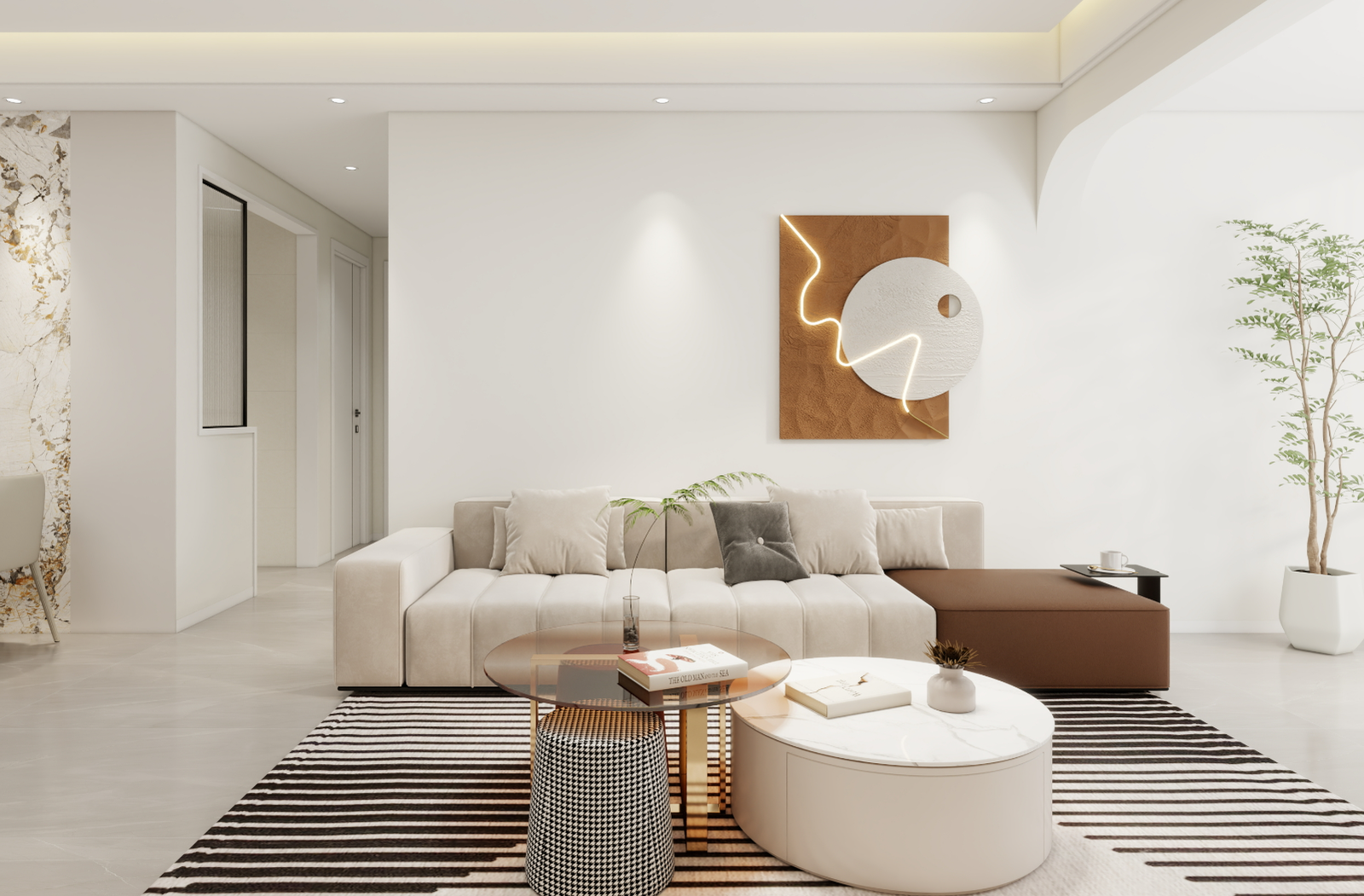International Standards for Formaldehyde in Indoor Air and Interior Wall Paint
Formaldehyde in indoor air is a significant health concern, with international standards set by organizations like the WHO and EPA to limit exposure. To combat this, various methods are employed, including formaldehyde-purifying paints that use technologies such as photocatalysis and physical adsorption to capture and break down formaldehyde. Ventilation is a crucial and cost-effective strategy, as it dilutes and expels formaldehyde by bringing in fresh air. However, ventilation alone may not be sufficient, especially in cases of high formaldehyde release. Therefore, combining ventilation with other measures like purifying paints, activated carbon, plants, and professional remediation can create a more comprehensive solution. This integrated approach helps effectively reduce formaldehyde levels and improve indoor air quality, ensuring a healthier living environment.

International Standards for Formaldehyde in Indoor Air
Different countries and regions have established various standards for formaldehyde concentration in indoor air. Some common international standards are as follows:
- World Health Organization (WHO): The recommended indoor formaldehyde concentration is no more than 0.1 mg/m³.
- European Union: The limit for indoor formaldehyde concentration is set at 0.12 mg/m³.
- United States: The U.S. Environmental Protection Agency (EPA) suggests that indoor formaldehyde concentration should not exceed 0.08 ppm (approximately 0.1 mg/m³).
These standards are primarily based on the potential health hazards of formaldehyde, such as irritation of the respiratory tract, allergic reactions, and even carcinogenic effects. Therefore, controlling formaldehyde levels in indoor environments is crucial.
Principles of Formaldehyde Purification in Interior Wall Paint
The principles of formaldehyde purification in interior wall paint mainly rely on the following technologies:
- Photocatalysis:
- Principle: The main component of photocatalysts is nano-sized titanium dioxide (TiO₂). When exposed to ultraviolet or visible light, titanium dioxide catalyzes the formation of highly oxidative active groups (such as hydroxyl radicals and superoxide radicals) from water or oxygen in the air. These active groups can decompose formaldehyde and other harmful substances into harmless carbon dioxide and water.
- Advantages: The purification effect is long-lasting, as photocatalysts can continue to function as long as there is light.
- Limitations: Sufficient light conditions are required; the effect is significantly reduced in the absence of adequate light.
- Physical Adsorption:
- Principle: Adsorbent materials, such as activated carbon and diatomite, are added to the paint. These materials adsorb formaldehyde from the air through their porous structures.
- Advantages: The process is simple to implement and does not cause secondary pollution.
- Limitations: Adsorbent materials can become saturated and need to be replaced periodically; otherwise, the adsorbed formaldehyde may be released back into the air.
- Chemical Reaction:
- Principle: Active groups containing amino (—NH₂) or imino (—NH—) groups are added to the paint. These groups can react with formaldehyde through nucleophilic addition, thereby fixing and converting formaldehyde into harmless substances.
- Advantages: The initial purification effect is relatively good.
- Limitations: Over time, the active groups are consumed, and the purification effect gradually weakens.
- Composite Purification Technology:
- Principle: This technology combines photocatalysis, physical adsorption, and chemical reactions. Formaldehyde is first adsorbed onto the surface of the paint through physical adsorption, and then decomposed through photocatalysis or chemical reactions.
- Advantages: The purification speed is faster, and the effect is more lasting.
Each of these technologies has its own strengths and weaknesses, and the choice of formaldehyde-purifying paint can be made based on specific needs.
Measures to Combat Formaldehyde through Ventilation
Increasing ventilation is one of the most direct, effective, and cost-efficient methods for dealing with formaldehyde pollution in indoor environments. Below is a detailed explanation of how ventilation can help mitigate formaldehyde, including its principles, implementation methods, and synergistic effects with other measures.
Principles of Ventilation for Formaldehyde Mitigation
- Dilution Principle:
- Formaldehyde in indoor air primarily originates from building materials and furniture. By ventilating, the indoor air containing formaldehyde is expelled outdoors while fresh outdoor air is brought in, thereby diluting the indoor formaldehyde concentration.
- According to the dilution formula: Cindoor=Qventilation×t+VindoorQemission×t, where Cindoor is the indoor formaldehyde concentration, Qemission is the formaldehyde emission rate, Qventilation is the ventilation rate, t is the time, and Vindoor is the indoor space volume. The greater the ventilation rate, the lower the indoor formaldehyde concentration.
- Accelerated Release Principle:
- Ventilation can accelerate the release of formaldehyde from building materials and furniture. When fresh air enters the room, it reduces the local concentration of formaldehyde in the air, prompting the faster release of formaldehyde from within the materials, thereby shortening the formaldehyde release cycle.
Implementation Methods of Ventilation
- Natural Ventilation:
- Opening Windows: This is the simplest and most cost-effective method. It is recommended to ventilate by opening windows for at least 2 hours daily, preferably once in the morning and once in the afternoon. If conditions allow, keeping windows slightly open to maintain continuous airflow is advisable.
- Utilizing Convection: When ventilating, try to open windows at both ends of the room to create a flow of air, which can more effectively expel indoor air. For example, opening both the door and windows of a bedroom can accelerate air movement.
- Considering Seasons and Weather: During winter and rainy seasons, ventilation time can be shortened, but regular ventilation is still necessary. In summer and dry seasons, ventilation time can be extended.
- Mechanical Ventilation:
- Exhaust Fans: Install exhaust fans in areas prone to odors and humidity, such as kitchens and bathrooms. Exhaust fans can expel indoor air outdoors while bringing in fresh air. It is advisable to plan for the installation of exhaust fans during renovation.
- Ventilation Systems: Ventilation systems are more advanced devices that can continuously bring in fresh air and expel polluted indoor air without opening windows. These systems can also filter the air and regulate temperature, making them suitable for households with high air quality requirements.
- Air Purifiers: Although air purifiers do not directly ventilate, some models come with negative ion generators or activated carbon filters that can assist in purifying the air. In situations where ventilation is insufficient, they can serve as supplementary measures.
Limitations of Ventilation
- Environmental Constraints:
- The effectiveness of ventilation is influenced by outdoor air quality, wind speed, and wind direction. If the outdoor air quality is poor (e.g., during smog or dust storms), ventilation may introduce additional pollutants.
- In high-rise buildings, ventilation effectiveness may be affected by floor height and building structure, making it difficult to create effective airflow in some rooms.
- Incomplete Formaldehyde Removal:
- While ventilation can reduce formaldehyde concentrations, it cannot completely eliminate formaldehyde. The release of formaldehyde from building materials and furniture is a long-term process that can last for months or even years. Relying solely on ventilation is unlikely to bring formaldehyde levels down to safe standards in a short period.
- Seasonal and Weather-Related Challenges:
- During cold winters or hot summers, prolonged window opening for ventilation may lead to uncomfortable indoor temperatures and increased energy consumption for heating or cooling. Additionally, during the rainy season, opening windows for ventilation may cause indoor dampness, affecting living comfort.
Synergistic Effects of Ventilation with Other Measures
- With Purifying Paint:
- On the basis of ventilation, using formaldehyde-purifying paint can further reduce formaldehyde concentrations. The paint removes formaldehyde from the air through physical adsorption or chemical reactions, and ventilation helps expel the adsorbed formaldehyde from the paint surface. The combined effect of these two methods can more effectively purify indoor air.
- With Activated Carbon:
- Activated carbon is a commonly used adsorbent material that can adsorb formaldehyde from the air. Placing activated carbon indoors while maintaining ventilation allows the adsorbed formaldehyde to be expelled more quickly, extending the lifespan of the activated carbon.
- With Plants:
- Some plants (such as pothos, spider plants, and aloe vera) have certain formaldehyde-purifying capabilities. Although the purification effect of plants is limited, they can serve as supplementary means to further improve indoor air quality when combined with ventilation.
- With Professional Remediation:
- For rooms with high formaldehyde concentrations, consider hiring professional formaldehyde remediation companies. These companies typically use specialized equipment and chemicals to rapidly reduce formaldehyde levels. After remediation, maintaining good ventilation can prevent formaldehyde rebound and consolidate the remediation effect.
